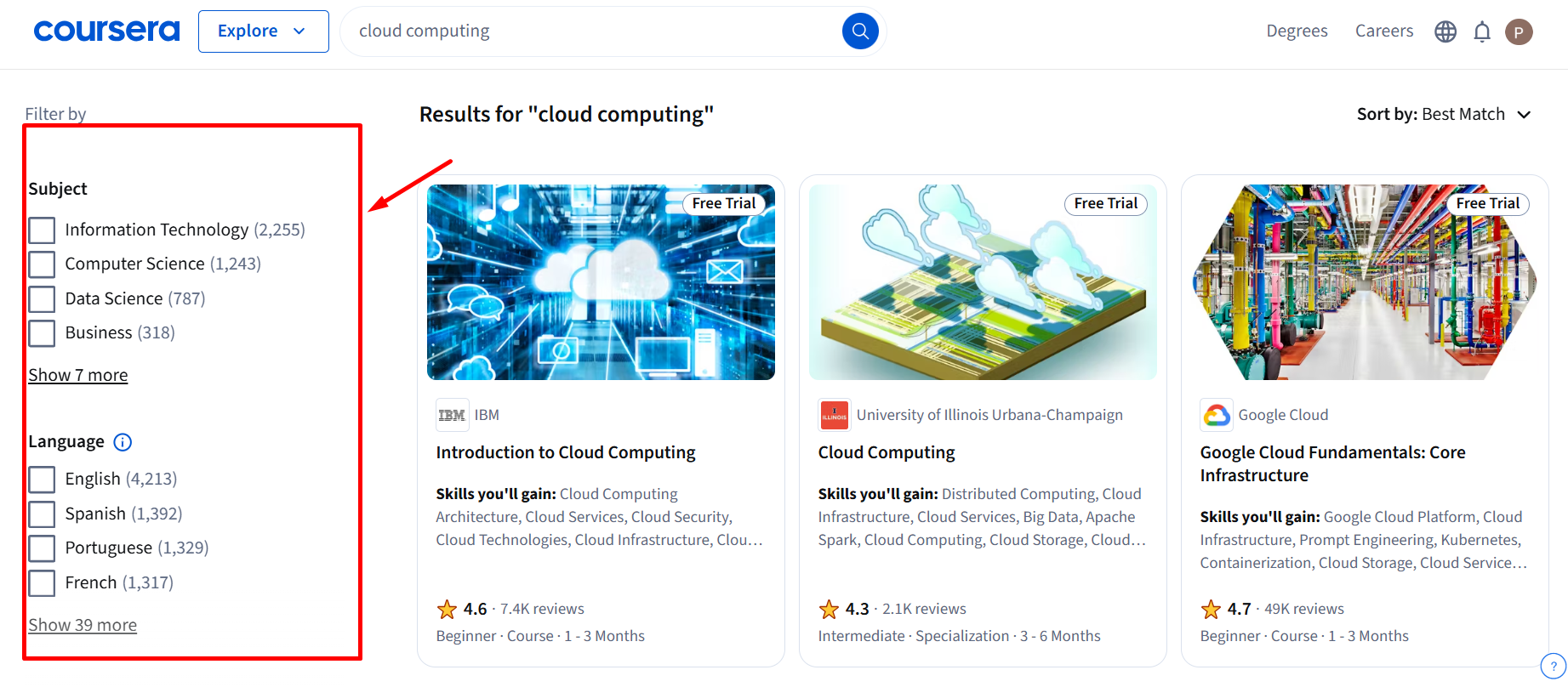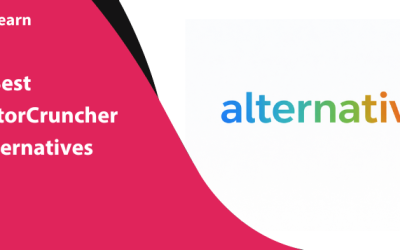How to Create a Website Like Coursera?
Startled by Coursera’s growth story so far, and inspired to create a website like Coursera? You’re stepping into a profitable business! With a $694.7 million revenue in 2024, Coursera has established itself as an industry leader in the course industry.
From embracing a dynamic business model to scaling through strategic partnerships, there’s much to learn from the popular Coursera marketplace. On the other side, you can also scale over its shortcomings like expensive certifications, corporate training gaps, etc.
If you’re an entrepreneur, here’s a 7-step easy guide on how to create a website like Coursera.
So, are you ready to establish a revolutionary course marketplace?
Why Create a Website Like Coursera?
Here are the potential benefits of creating a website like Coursera:
-
Market Demand
Courses are one of the most profitable digital products in the industry. The convenience and accessibility make it one of the most preferred content formats for learning a topic. For example, nowadays, there’s a considerable demand for AI and machine learning courses.
-
Generate Revenue
From certificates to corporate training and subscriptions, you can monetize your course marketplace in multiple ways. This significantly increases your overall platform revenue!
-
Build Authority
For a marketplace like Coursera, you can gain credibility through partnerships & collaborations with industries & universities. This helps to position yourself as a better brand in your niche.
-
Long-Term Community Impact
When learners gain knowledge, enhance skills, or gain employability, it fosters a strong community.
How to Create a Website Like Coursera in 8 Easy Steps
Here’s an 8-step guide on building a website like Coursera:

Step 1: Decide on a Profitable Niche & Target Market
The first step in building your Coursera-like marketplace is identifying a profitable niche. Narrowing down your course marketplace to a specific niche helps you focus on a specific audience. Further, this could help your marketplace stand out in the crowded market.
Targeting small markets helps to establish strong relationships with your audience and build your authority. Another benefit of building a niche course marketplace is targeted marketing.
Key strategies to choose the right niche:
-
Think about your strengths, passions and experience.
If you are passionate or have expertise about a specific niche, building a marketplace in that niche gets much easier. You might already have an audience or be a part of the niche community.
For instance, if you are a developer and are acquainted with different programming languages, start a coding marketplace like Codecademy.
-
Leverage Market Research & Identify Gaps
Tap into high-demand niches & market trends with comprehensive market research. Use a mix of tools for social listening, keyword research, and direct engagement. BuzzSumo, Quora, Reddit, Google Trends, focus groups, etc., are some popular tools. This will help you to position your platform better!
-
Perform Competitor Analysis
Pick up 2-3 popular course marketplaces in your niche. Analyze their features, course topics, shortcomings, and marketing strategies. You can identify the gaps and address them through your course marketplace.
-
Look into Google Searches and LLMs
Modern search has evolved, but Google search still remains significant. Think about a niche you find exciting, like “fitness”, and see what people are searching for the most. Brainstorm ideas on LLMs for specific industries, audiences, and niches.

Step 2: Understand Your Target Audience
Understanding the target market is crucial for the success of your course marketplace.
When you know your target audience in and out, you create a course marketplace tailored to their needs and expectations, which drives engagement and boosts your profit margins further.
Different target markets in e-learning include K-12, professional development, corporate training, and language learning.
Create detailed learner personas, including the following key aspects:
- Basic demographic (age, profession, proficiency)
- Psychographics(values, beliefs, interests)
- Learning Goals & motivations
- Preferred learning style and content
- Behavioural patterns
Interviews, surveys, focus groups, and web analytics are effective tools for learner data collection.
Once you gather essential learner information, it’s time to implement while building your marketplace. This involves the kind of content or design elements your learners would prefer. Also, the learning goals they are planning to attain through your marketplace.
Step 3: Determine Your Business Model
A well-defined business model lays the foundation for a Coursera-like marketplace’s success. It defines how your platform generates revenue and profit!
A marketplace like Coursera makes money from different revenue streams. The platform is divided into three major customer segments: consumer, business, and degree.
The Consumers category primarily earns money from Coursera Plus subscriptions. Coursera for Business involves developing training programs for corporations & government agencies. The last segment is its robust collaborations with leading universities and industry partners.
Key Business Models for Building a Coursera-like Marketplace
- Subscriptions – Like Coursera Plus, you could create subscriptions offering unlimited access to different course categories. This is suitable for learners who wish to access a broad range of courses.
- Freemium Model – This involves offering the basic course content for free while charging for premium features like certificates and graded projects.
- Corporate & Academic Partnerships – Partner with accredited universities and organizations to offer specialized courses & degrees. You can offer bachelor’s, master’s degrees, or mastertrack certificates. Earn from corporate training courses for increasing productivity and skills.
- Advertising – An additional revenue stream is monetizing from third-party ads. You can sell your ad space for displaying promotional content, sponsored listings, or related content.
Step 4: Choose the Core & Advanced Features
The success of your course marketplace depends on its features and functionalities. A platform with a rich feature-set boosts engagement, streamlines course creation & delivery, & drives your platform revenue.
For easier understanding, we have categorized features: learner, instructor, and admin.
Key Learner Features
- Easy Sign up/Registration
Ensure you offer a simple and easy login process for learners to join your platform. Additionally, include social sign-up through Google, Facebook, or Apple.
- Profile Management
Allow learners to customize their profile with basic information, learning preferences & styles.
- Course Search & Discovery
Course search & discovery is one of the most essential features of a course marketplace like Coursera. Include a quick and intuitive search bar, where learners can find their favourite courses. Coursera also includes what’s popular now, along with autocomplete suggestions.
- Advanced Filtering Options
Each course category might host several courses. Advanced filter options like subject, language, level, duration, and skill help learners to find exactly the course they are looking for.

- Quizzes, Assignments, Progress Tracking
Features like quizzes, tests and guided projects offer a comprehensive learning experience. It puts your knowledge into practice and improves retention.
- Course Enrollment & Certificates
Once learners find the right course, they can enroll in it. Coursera provides multiple enrollment options: free audit, financial aid, or access through Coursera Plus subscriptions.
- Secure Course Payment
Ensure an easy and convenient payment workflow. Support diverse payment methods, including major credit cards, debit cards, digital wallets, and PayPal. You could also offer support for Buy Now, Pay Later and prepaid card options.
- Ratings & Review
Allow learners to rate courses or course materials like videos, assessments, or quizzes. This way, instructors can consider the feedback and improve their courses.
- Course Recommendations
Provide course recommendations based on learners’ history, goals, and interests. Professional certificates, specialization, and guided projects are popular course types recommended.
- Discussion Forums
If you wish to create a niche community around your course, offer dedicated spaces for community-building. Learners can ask questions, share resources, and build networks through these forums.
- Mobile-Friendly
Ensure your UX experience is responsive across different screens and devices. This ensures you offer a seamless learning experience from anywhere!
Key Instructor Features
- Profile Management
A compelling instructor profile highlights their qualifications, expertise and experience. This helps to gain a competitive edge and attract the right students.
- Course Creation & Delivery
Unlike Udemy, Coursera doesn’t provide access to an open course creation tool. Coursera doesn’t allow everyone to create & sell courses on the platform. Partners get access to Coursera’s authoring tools through which they can create & upload courses.
- Instructor Dashboard
Offer tools & metrics for tracking course creation, learner progress, and course effectiveness.
- Communication Tools
Communication features like chats, discussion forums, and notifications make learning more effective. Instructors can give personalized feedback and solve doubts through these channels.
- Setting prices & choosing pricing model
Allow creators to select from pricing models like one-time payment or a subscription plan.
Key Admin Features
- Learner Management
Maintaining a comprehensive learner database is essential for a course marketplace. Admin can manage the number of learners registered, course purchases, learner progress, and their essential details.
- Instructor Management
Instructors are the driving force empowering your course marketplace. Admin can create, manage, and remove instructor profiles. Further, they can store their basic details & credentials, qualifications, expertise, and performance data.
- Dashboard & Analytics
Admin can track overall revenue, earnings per course, course enrollments, and more.
- Content Moderation & Quality Checks
Review & quality control help learners get the best content. Create a review process to ensure the course content meets quality standards, content guidelines, and legal compliance.
- Platform Settings
Building a unique brand helps your marketplace stand out. Admin can choose logos, banners, colors, or themes for their e-learning platform. Additionally, allow third-party integrations like payment gateway, CMS, email marketing, referrals, etc.
Optional Features
- AI-powered recommendations
- Multilingual Support
- Automated content creation
- Gamification
- Live Classes
- Affiliate management
Step 5: Design Your UI/UX
A seamless UI/UX curates a meaningful and intuitive user experience from start to finish! It’s crucial to tailor your UI/UX to learner behaviour, needs, and motivations. For a course marketplace, you need to tailor distinct paths for learners, instructors, admins, etc.
Similarly, learners can have a customized workflow with a course homepage, course search & filtering, and course payment.
For instructors, it could be course creation & publishing, tracking course engagement, and earning revenue.
Each workflow needs to be easy, streamlined and frictionless. This reduces user frustration and helps them achieve their platform goals.
Here are some design best practices:
- Provide an explore drop-down menu covering all the courses based on categories, roles, or skills
- Use a high-contrast color palette with 2-3 primary colors
- Include micro-interactions like tool tips, progress bars, or gamification cues to make UX more interactive
- Offer mobile responsive design & offline access for a seamless UX experience
Step 6: Choose the Right Development Approach
Another crucial determiner of your course marketplace’s success is the right development approach. It influences your functionality, scalability, ease-of-use, and definitely the overall costs. Hence, choose wisely and one that aligns with your needs.
Here’s a quick rundown of different approaches:
-
Ready-made Coursera Clone Scripts
One of the best options to create a website like Coursera is a ready-made clone script. All the features are pre-built, no coding hassles and 100% freedom to customize it to your business needs. Embrace shorter development cycles as customisation and development go in parallel.
Pinlearn is a highly customizable white-label clone script to scale your course marketplace in higher education, corporate learning, or institutional learning. From seamless course creation & delivery, robust analytics & convenient payment workflows, you’ll get a complete package. Get all this with one-time, no recurring or hidden costs!
-
No Code / Low Code Platforms
Alternatively, you can use low-code platforms like Bubble.io and OutSystems to quickly build your course marketplace. While the easy and quick launch is a given, it costs you monthly fees and offers limited customization.
-
Custom Development
The last option is to build the entire marketplace from scratch! You need an in-house tech team, resources and an extensive budget for this approach. Also, you can outsource it to a development agency, but often the project spans across months!
Step 7: Promote Your Coursera-Like Website
Promoting a marketplace like Coursera involves both B2B and B2C promotional strategies. Define your target audience before zeroing in on your promotional strategies. This helps to identify the marketing channels they likely hang out in and tailor your marketing efforts accordingly.
Let’s look at effective marketing strategies for a Coursera-like marketplace!
-
Social media marketing
Use social media marketing for content creation, engaging the audience, community-building, and sharing updates. Social media is great for targeting different demographics.
-
Strategic Partnerships
Reach out to leading universities, small and large corporate businesses, and government agencies for collaborations and partnerships. Coursera is well-known for its industry-approved degrees, specializations, and certifications.
-
Paid Ads
Create Google ads targeted at course-related keywords. On the other hand, Meta ads, LinkedIn ads and Instagram ads target career professionals and the B2B market.
-
Affiliate Marketing & Influencer Collaborations
Partner with popular educators, YouTubers, and bloggers to broaden your reach. Build an affiliate program for creators and bloggers where they can earn commissions for promotions.
-
Email Marketing
An age-old promotional tactic, email marketing, still holds significance. Build an email list to create campaigns for course launches, attractive deals, and post-engagement sequences.
-
Social Proof
Gather testimonials, reviews & ratings to promote on social media & website. This builds trust & credibility around your course marketplace.
Step 8: Scaling Your Marketplace
Now that you’ve built your course marketplace and reached your initial milestones. It’s time to scale your marketplace to fuel growth. Scaling your course marketplace involves a thoughtful strategy and planning.
You need to balance a two-sided marketplace and scale the infrastructure as well!
Here are few scaling strategies for a Coursera-like marketplace:
- Scale new market- One of the most common scaling strategies is to expand your marketplace into a new country or region.
- Scale new course niches – Create courses in demanding categories & niches like AI and machine learning as per market trends.
- Onboard new instructors – Strengthen your platform’s workforce by onboarding top instructors or collaborating with leading institutions.
- Scale new customer segment – Expand your course marketplace into a new customer segment like corporate learning or K-12 learning.
💡Key Strategies: Don’t just focus on scalability, but also on increasing your credibility, accurate pricing, and monetization.
Well, that’s the end of our detailed guide on how to create a website like coursera!
Conclusion
Building a course marketplace needs a strategic blend of an innovative idea, planning, and development strategy. E-learning websites like Coursera, Udemy, and edX are gaining popularity due to increasing market demand & brand positioning. This playbook covers all the steps for creating your website like Coursera.
Choosing the right platform could be a game-changer for building a successful course marketplace. If you have an amazing idea, get on a free 15-minute demo call with us! We help you transform your idea into your dream course marketplace!
FAQ-Related to How to Create a Website like Coursera
1. How to build a course marketplace like Coursera?
Below are the steps for building a course marketplace like Coursera:
- Decide on a profitable idea
- Understand your target audience
- Determine your business model
- Design your UI/UX
- Identify the core & advanced features
- Choose the right developmental approach
- Promote your course marketplace
- Scaling your course marketplace
2. What is the tech stack required to build a course marketplace like Coursera?
Here’s the tech stack for a Coursera-like website:
- Front-end technologies – React.js, Angular, or Vue.js
- Back-end technologies – Python, Node.js, Java, Ruby
- Database – PostSQL, MySQL, MongoDB
3. What’s the developmental cost to create a website like Coursera?
The overall development cost to create a website like Coursera is around $50,000 to $100,000. Factors like feature-set, hourly rates, tech stack and customization influence the development cost.





